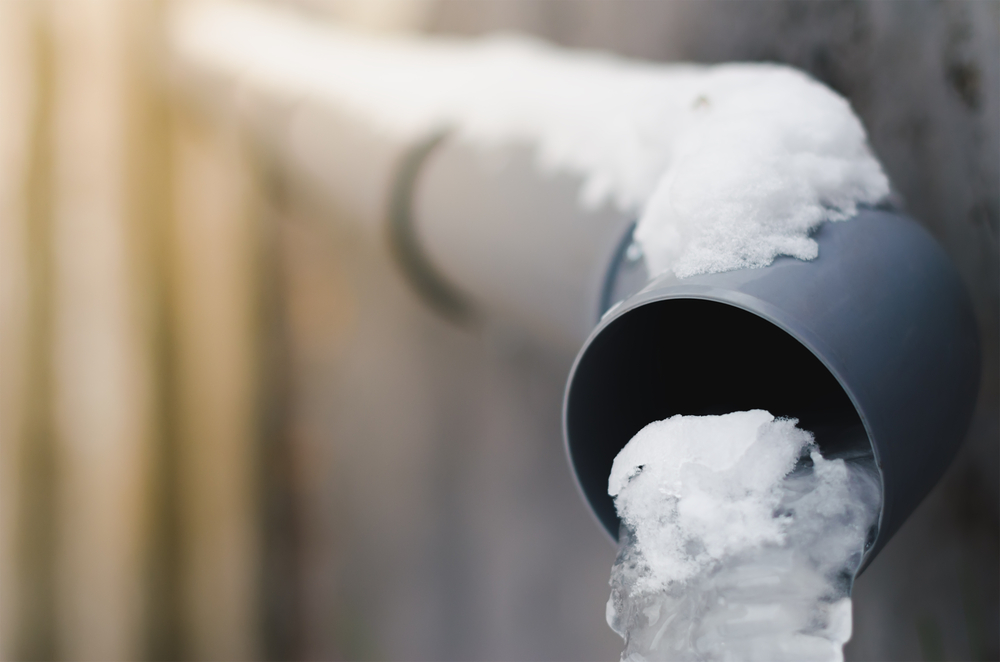Essential Tips to Avoid Frozen Pipes in Cold Weather: Specialist Insights
Essential Tips to Avoid Frozen Pipes in Cold Weather: Specialist Insights
Blog Article
Right here down the page you will discover additional excellent tips in regards to How to prepare your home plumbing for winter weather.
.jpg)
Cold weather can wreak havoc on your pipes, especially by freezing pipes. Below's exactly how to prevent it from taking place and what to do if it does.
Intro
As temperatures decline, the risk of frozen pipelines rises, potentially bring about costly repair services and water damage. Recognizing exactly how to stop frozen pipelines is important for homeowners in chilly environments.
Prevention Tips
Shielding at risk pipes
Wrap pipelines in insulation sleeves or make use of heat tape to secure them from freezing temperature levels. Focus on pipes in unheated or outside locations of the home.
Home heating strategies
Maintain indoor rooms sufficiently heated up, specifically locations with pipes. Open up closet doors to permit cozy air to distribute around pipes under sinks.
Exactly how to determine frozen pipelines
Seek lowered water circulation from taps, unusual odors or noises from pipes, and visible frost on exposed pipelines.
Long-Term Solutions
Architectural modifications
Think about rerouting pipes far from outside walls or unheated areas. Include additional insulation to attic rooms, basements, and crawl spaces.
Updating insulation
Purchase premium insulation for pipes, attic rooms, and walls. Correct insulation assists keep regular temperatures and minimizes the danger of icy pipelines.
Securing Outside Plumbing
Garden hose pipes and outdoor faucets
Disconnect and drain yard hoses prior to wintertime. Install frost-proof faucets or cover outdoor faucets with shielded caps.
Comprehending Icy Pipelines
What causes pipes to ice up?
Pipes freeze when subjected to temperatures below 32 ° F (0 ° C) for prolonged durations. As water inside the pipelines freezes, it expands, taxing the pipeline wall surfaces and potentially causing them to burst.
Dangers and problems
Icy pipelines can lead to supply of water disturbances, residential property damages, and pricey fixings. Ruptured pipelines can flooding homes and trigger comprehensive structural damage.
Signs of Frozen Water Lines
Recognizing frozen pipes early can prevent them from breaking.
What to Do If Your Pipelines Freeze
Immediate activities to take
If you presume frozen pipes, maintain faucets open up to soothe stress as the ice melts. Make use of a hairdryer or towels soaked in warm water to thaw pipelines slowly.
Verdict
Avoiding icy pipes needs proactive procedures and quick actions. By understanding the reasons, signs, and safety nets, house owners can shield their pipes during cold weather.
5 Ways to Prevent Frozen Pipes
Drain Outdoor Faucets and Disconnect Hoses
First, close the shut-off valve that controls the flow of water in the pipe to your outdoor faucet. Then, head outside to disconnect and drain your hose and open the outdoor faucet to allow the water to completely drain out of the line. Turn off the faucet when done. Finally, head back to the shut-off valve and drain the remaining water inside the pipe into a bucket or container. Additionally, if you have a home irrigation system, you should consider hiring an expert to clear the system of water each year.
Insulate Pipes
One of the best and most cost-effective methods for preventing frozen water pipes is to wrap your pipes with insulation. This is especially important for areas in your home that aren’t exposed to heat, such as an attic. We suggest using foam sleeves, which can typically be found at your local hardware store.
Keep Heat Running at 65
Your pipes are located inside your walls, and the temperature there is much colder than the rest of the house. To prevent your pipes from freezing, The Insurance Information Institute suggests that you keep your home heated to at least 65 degrees, even when traveling. You may want to invest in smart devices that can keep an eye on the temperature in your home while you’re away.
Leave Water Dripping
Moving water — even a small trickle — can prevent ice from forming inside your pipes. When freezing temps are imminent, start a drip of water from all faucets that serve exposed pipes. Leaving a few faucets running will also help relieve pressure inside the pipes and help prevent a rupture if the water inside freezes.
Open Cupboard Doors
Warm your kitchen and bathroom pipes by opening cupboards and vanities. You should also leave your interior doors ajar to help warm air circulate evenly throughout your home.

As an avid person who reads about Helpful Tips to Prevent Frozen Pipes this Winter, I assumed sharing that blog post was beneficial. In case you enjoyed reading our blog post kindly make sure you remember to pass it around. Thank you so much for going through it.
Start Now Report this page